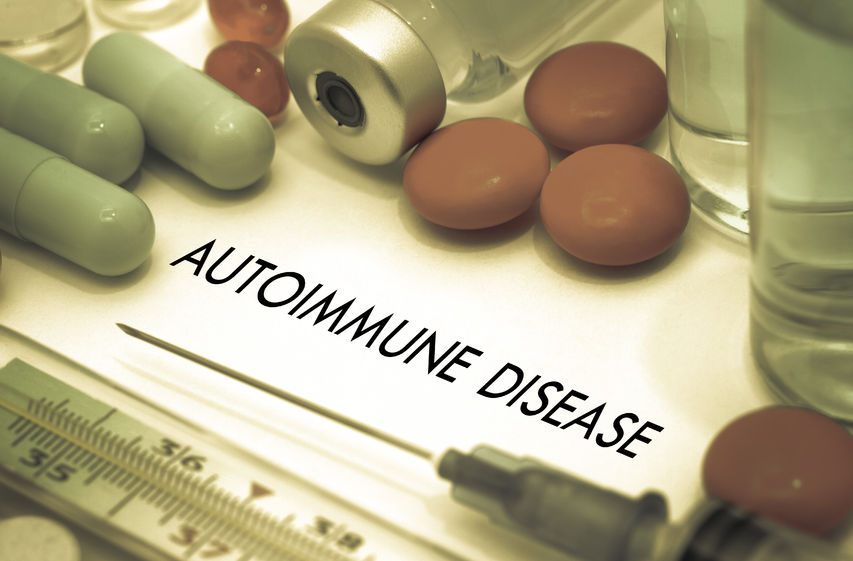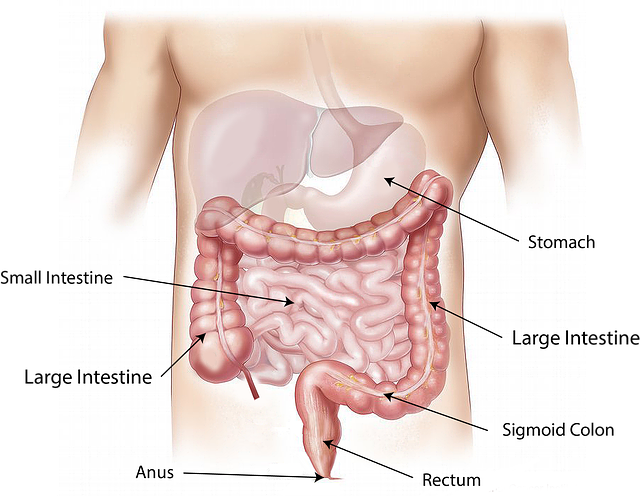List of Gluten-Free Foods You Can Eat
Receive a free 50+ page guide with gut rebuilding recipes and tips from 45 wellness experts, courtesy of gut health expert Summer Bock. Also check out her Better Belly Project 2.0.
Check out this list of gluten-free foods you can eat on a gluten-free diet, whether you have celiac disease or non-celiac gluten sensitivity (often shortened to “gluten sensitivity“). You might be pleasantly surprised by all of the choices. If you are ready for a culinary adventure, be open to trying new foods, such as almond flour for baking, to give yourself the most options.
Note that this list of gluten-free foods contains mostly whole foods, not prepackaged gluten-free products that consume space on grocery store shelves. Your best bet is to focus on purchasing whole foods and cooking tasty meals from scratch. That way, you know exactly what you are putting into your mouth.
Also see What Foods Contain Gluten? for clarity on which foods you should avoid on a gluten-free diet.
Basic List of Gluten-Free Foods
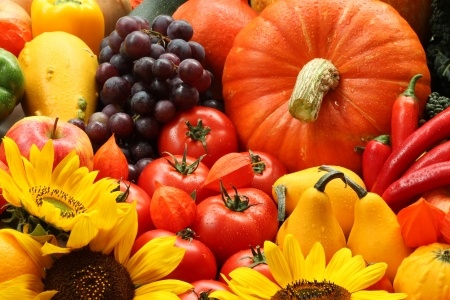
The following foods are naturally gluten free. The difference, for example, is whether you eat sliced strawberries or strawberry shortcake made with wheat flour.
Also be careful of breading, marinades, sauces, and dips that often accompany these foods because they likely contain hidden gluten. For any prepared foods, check the ingredients to ensure they are gluten free.
- Meat – Ideally, eat meat from grass-fed or wild animals. Of course, your budget will matter here.
- Fish and shellfish
- Eggs
- Fruits – Fresh, frozen, canned
- Vegetables – Fresh, frozen, canned
- Dairy products are questionable – See “Dairy Products: Maybe, Maybe Not” below.
- Beans
- Nuts, seeds, nut and seed oils, nut and seed butters – Dry roasted nuts and honey roasted nuts might contain gluten. Check labels. Also limit polyunsaturated fats, which are more prevalent in most nuts and seeds than monounsaturated fats.
- Gluten-free grain alternatives – See below.
- Spices and herbs – Spices are typically gluten free, but check spice mixes and seasoning packets because they might contain gluten.
- Vinegars, distilled – Includes apple cider vinegar, balsamic vinegar, white vinegar, and red wine vinegar, but malt vinegar is not gluten free.
- Gelatin – A healthy protein powder that you can add to soups, smoothies, and other beverages. Hydrolyzed beef gelatin from Custom Collagen can be mixed into beverages, hot or cold. The powder will dissolve and stay dissolved, even as the beverage cools. This gelatin has no discernible odor and is tasteless.
I suggest choosing organic, non-GMO, gluten-free foods whenever possible. That includes non-GMO soy. Of the soy grown in the United States, more than 90% of it is genetically modified. For suggestions from the Organic Authority about which brands to choose, read this article: What Are the Safest Non-GMO Soy Products? (Are There Any?)
Gluten-Free Grains
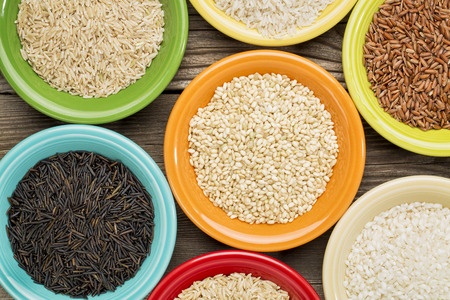 A variety of rice grains
A variety of rice grainsWheat, rye, and barley (and sometimes oats) are the gluten grains that must be avoided on a gluten-free diet for people with celiac disease or gluten sensitivity. These grains are considered cereal grains.
The other cereal grains are typically considered gluten free—though technically, they, too, contain gluten. The term “gluten“ is an umbrella term for the storage proteins in all cereal grains. In any case, these “gluten-free“ cereal grains include:
- Rice
- Corn
- Sorghum
- Millet
- Teff
Many gluten-free products contain rice and/or corn as wheat substitutes. Be aware that just because a product is labeled “gluten free“ doesn't necessarily mean it's healthy for you. Read ingredient labels. Junk food made with rice or corn is still junk food.
In addition, some people with celiac disease or gluten sensitivity are also intolerant of corn and/or rice. In some cases, an intolerance develops due to the frequent consumption of these wheat substitutes.
For many people with celiac disease or gluten sensitivity, the traditional gluten-free diet doesn't go far enough. They need to eliminate all of the cereal grains, including corn and rice, to help their bodies heal.
If you are not symptom-free on the traditional gluten-free diet, I recommend avoiding all of the cereal grains—at least temporarily. Also consider following the autoimmune diet called the “paleo autoimmune protocol“ (often abbreviated as “AIP“).
Pseudo Grains
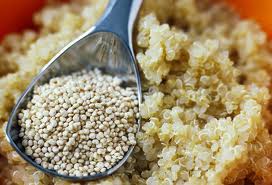 Quinoa, one of the pseudo grains
Quinoa, one of the pseudo grainsThe following are pseudo grains that you can substitute for grass grains in cereals, pancakes, flatbreads, and in many recipes that typically use wheat and other gluten grains:
- Amaranth
- Buckwheat
- Quinoa
Cross-contamination with gluten can occur with these naturally gluten-free foods. Verify that they are gluten free by checking the package labeling or by calling the manufacturer.
Grain-Free Flours
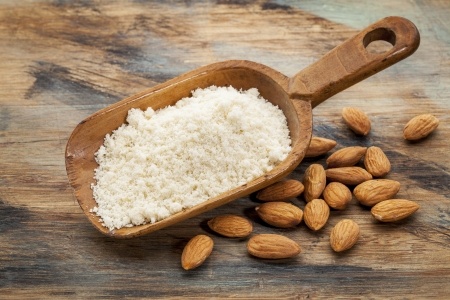 Almond flour and raw almonds
Almond flour and raw almondsExperiment with this list of gluten-free foods that serve admirably well as grain-free flours:
- Almond flour and other nut flours
- Amaranth flour
- Arrowroot flour
- Buckwheat flour
- Chickpea flour and other bean flours
- Coconut flour
- Flaxseed meal
- Potato flour
- Soy flour
- Tapioca flour
- Teff flour
- Quinoa flour
Gluten-Free Dairy Products? Maybe, Maybe Not
In short: With dairy products, you might need to play the medical detective to determine if they are a problem for you.
Unfortunately, many people with celiac disease or gluten sensitivity also have trouble consuming dairy products.
Some packaged dairy products contain gluten, so be sure to check ingredient labels. Still, even when gluten is not added to a dairy product during processing, it might still be a problem for you. For example, some people are so sensitive to gluten that they appear to react to the gluten that the dairy cows consume.
This, of course, begs the question: Does gluten in a dairy cow's diet somehow get transferred into their milk? What mechanism is at work here? Might this also happen when human mothers produce milk for their babies?
In addition, some people have a food allergy or food intolerance to casein and/or whey, the proteins in dairy. Or, due to cross-reactivity with gluten, their immune system mistakes dairy for gluten and reacts as if it were gluten.
Gluten-Free Beverages
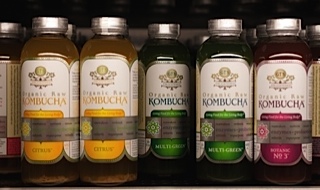 Kombucha tea, a probiotic beverage
Kombucha tea, a probiotic beverageYes, filtered water is always a good choice, but what else can you drink? Check label ingredients for the following non-alcoholic beverages that are typically gluten free:
- Carbonated beverages
- Coffee – Flavored varieties might contain gluten. Note that for some people, coffee is cross-reactive with gluten so must also be avoided.
- Fruit juice and vegetable juice
- Milk alternatives – Alternatives include almond milk, coconut milk, rice milk, and soy milk.
- Tea – Includes black, green, white, and herbal teas, but especially check flavored tea mixes because they might contain gluten.
- Kombucha tea – This probiotic beverage is a great alternative for people who are not sensitive to yeast and don't have a problem with candida albicans overgrowth.
- Smoothies – Ideally, these are made from a short or long list of gluten-free foods that double as superfoods.
Also check label ingredients for the following alcoholic beverages. If you are still in the process of healing from gluten damage, it is best to avoid alcoholic beverages or at least severely restrict their use.
- Brandy – This beverage is distilled from fruit and therefore doesn't contain gluten.
- Champagne – This sparkling wine is made from grapes and is gluten free.
- Cider – Some ciders are gluten free, and some aren't.
- Cognac – This beverage is derived from white grapes and is gluten free.
- Distilled alcohol (such as vodka and whiskey) – Note that flavored varieties might contain gluten. In addition, some people who are sensitive to gluten say that they react to distilled alcohol that is derived from the gluten grains. However, manufacturers dispute this claim, saying that all of the gluten is removed during the distillation process. This controversy remains unresolved—at least for some people. In any case, if distilled alcohol—or any alcohol—makes you sick, don't drink it. It's not worth it.
- Gluten-free beer – Check out the Gluten-Free Beer Guide for some safe options.
- Mead – This safe-to-consume beverage is produced by fermenting honey.
- Ouzo – This Grecian beverage is typically made from anise seed, but possibly from fennel seed and other aromatic plants. It is safe to consume.
- Rum – This beverage is made from sugar cane, so by itself it is safe to consume. However, watch out for other ingredients that are often added to mixed drinks made with rum.
- Sake – This Japanese beverage is made with milled rice. It is produced by adding koji mold spores to it. The safety of this beverage depends on whether those mold spores are derived from barley. If they are or if you're unsure, skip it.
- Tequila – This beverage is made from the blue agave plant, so it is safe to consume. However, check ingredients for mixes that are often added to tequila.
- Vodka – See note above under “Distilled alcohol.” Vodka is typically distilled from grain. However, some brands use potatoes, fruit, or sugar instead of grain.
- Wine – Note that wine coolers are often “malted.” Those that are contain gluten. Otherwise, wine does not contain gluten.
- Whiskey – See note above under “Distilled alcohol.” Whiskey (also called scotch, bourbon, and by other names) is distilled from fermented grains, such as barley, malted barley, rye, malted rye, wheat, and corn. Which grain depends on the variety of whiskey being produced.
Be very wary of mixed drinks. Check ingredients. Also, note that mixed drinks at restaurants and bars might get cross-contaminated with gluten. Your best bet is to avoid mixed drinks when you are out and about.
Instead, reserve your use of mixed drinks for home use where you have more control over your environment—at least with respect to gluten!
Gluten-Free Condiments
Check labels for the following condiments to ensure they are gluten free. Also look for healthier products. For example, many ketchup brands contain high fructose corn syrup, which is not a healthy sweetener.
- Gluten-free barbecue sauce
- Gluten-free ketchup
- Gluten-free mustard
- Gluten-free mayonnaise
- Wheat-free tamari – A suitable substitute for soy sauce, which contains gluten.
- Coconut aminos – Another suitable substitute for soy sauce, especially if you have a soy intolerance.
Gluten-Free Sweeteners
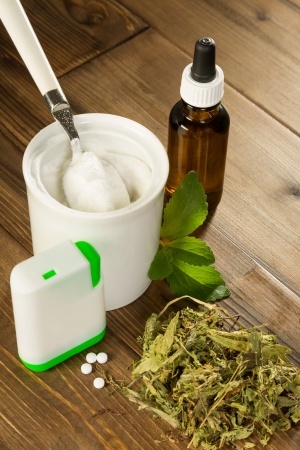 Various forms of stevia: as tablets, powder, liquid, and as the fresh and dried plant
Various forms of stevia: as tablets, powder, liquid, and as the fresh and dried plantThis list of gluten-free foods provides the delectable sweetness that some recipes and beverages require:
- Agave nectar
- Cane sugar
- Honey
- Maple syrup
- Stevia – This zero-calorie sweetener is made from the leaves of the plant species Stevia rebaudiana.
- Xylitol – This sweetener is derived from either birch tree or corn.
Check the ingredients in packets or tablets of stevia. Stevia extract or liquid stevia is usually a good choice.
Gluten-Free Thickeners
The following gluten-free foods are useful for baking and thickening gravy and sauces:
- Arrowroot
- Guar gum
CeliacFAQ.com home page > List of Gluten-Free Foods
